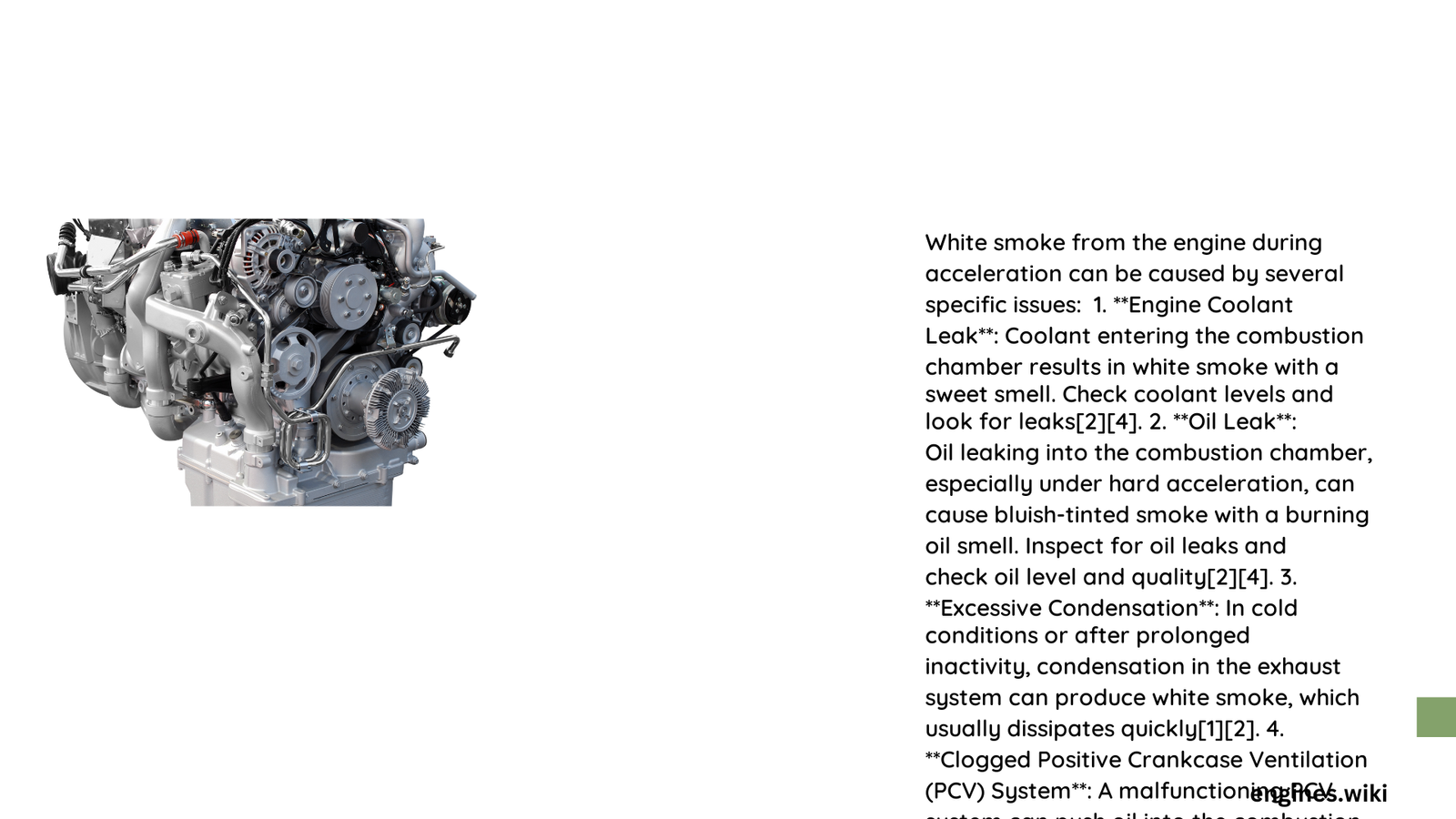White smoke emerging from your vehicle’s engine during acceleration can signal serious mechanical problems that demand immediate attention. This phenomenon indicates potential internal system failures ranging from minor condensation issues to critical component damage like head gasket failures or severe oil consumption problems. Understanding the root causes, diagnostic techniques, and potential repair strategies is crucial for preventing extensive engine damage and maintaining your vehicle’s performance and longevity.
What Causes White Smoke During Engine Acceleration?
Can Coolant Leaks Trigger White Smoke?
Coolant leaks represent a primary cause of white smoke during acceleration. When coolant enters the combustion chamber, it produces a distinctive white smoke with a sweet odor. Key indicators include:
- Visible coolant leaks
- Sweet-smelling exhaust emissions
- Potential head gasket damage
Diagnostic Checklist for Coolant-Related White Smoke
| Symptom | Potential Cause | Recommended Action |
|---|---|---|
| Sweet-smelling white smoke | Head gasket failure | Compression test |
| Low coolant levels | Internal coolant leak | Pressure system check |
| Overheating engine | Compromised cooling system | Comprehensive cooling system inspection |
How Do Oil Consumption Problems Generate White Smoke?
Oil entering the combustion chamber can produce white or bluish smoke during acceleration. Multiple mechanical failures contribute to this issue:
- Worn Piston Rings
- Allows oil to leak into combustion chambers
- Increases oil consumption
-
Reduces engine performance
-
Malfunctioning Positive Crankcase Ventilation (PCV)
- Creates excessive crankcase pressure
- Pushes oil into combustion areas
- Causes intermittent white smoke
What Role Does Condensation Play?
Normal condensation can generate temporary white smoke, particularly during cold starts or after extended vehicle inactivity. This typically dissipates quickly and doesn’t indicate serious mechanical issues.
Comprehensive Diagnostic Approach

What Tools Are Needed for Accurate Diagnosis?
Essential diagnostic equipment includes:
– OBD-II scanner
– Compression test kit
– Leak-down test kit
– Infrared temperature gun
– Specialized pressure testing equipment
How to Estimate Repair Costs?
Repair expenses vary significantly based on the underlying issue:
| Repair Type | Estimated Cost Range |
|---|---|
| Head Gasket Replacement | $1,500 – $4,500 |
| Piston Ring Replacement | $1,300 – $4,000 |
| PCV System Repair | $150 – $1,000 |
Critical Prevention Strategies
Can Regular Maintenance Prevent White Smoke?
Proactive maintenance helps mitigate white smoke risks:
– Perform regular oil changes
– Monitor coolant levels
– Address minor leaks immediately
– Use high-quality engine lubricants
– Follow manufacturer-recommended service intervals
Professional Recommendations
Persistent white smoke during acceleration warrants professional inspection. While some causes might be minor, others could indicate severe engine damage requiring extensive repairs.
When Should You Seek Professional Help?
- Continuous white smoke
- Accompanying performance issues
- Unusual engine noises
- Rapid coolant or oil consumption
Final Insights
White smoke from engine when accelerating serves as a critical warning signal. Prompt diagnosis and targeted intervention can prevent catastrophic engine failure and expensive repairs.
References:
– RennList Forum Discussion
– Subaru Forester Forum Thread
– Rislone Diagnostic Guide
